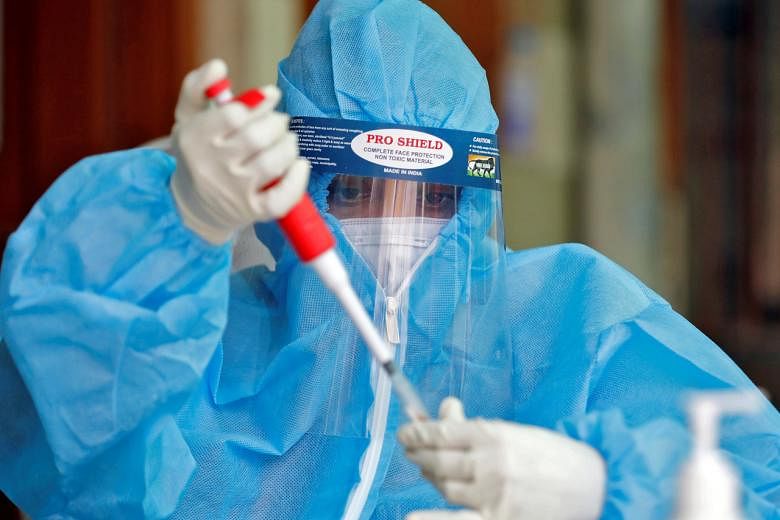NEW DELHI - India crossed yet another grim coronavirus milestone on Friday (June 26) when its total Covid-19 infections crossed the half-million mark, making the country one of only four whose tally has surpassed this milestone.
The country registered 508,953 cases as of Saturday afternoon along with a death toll of 15,685. Just five regions - Delhi, Gujarat, Maharashtra, Tamil Nadu and Uttar Pradesh - account for nearly a third of these cases. The number of active cases across the country stood at 197,387.
The speed at which infections have increased in India has gone up significantly. While it took more than 110 days to cross the first 100,000 cases, they zoomed from 400,000 to half a million in just a week. India is placed eighth on a list of countries with the highest death toll, according to a ranking on Worldometer.
Experts have warned the number of cases will increase substantially as India ramps up testing, with a peak expected as late as November. Much of the rise will come from big cities such as Delhi and Mumbai, where urban slums remain a key concern because of poor hygiene and congested spaces.
Authorities in India's capital, which is the country's worst-hit city with 77,240 cases, said this week they will survey Delhi's entire 29 million population. Officials will visit each household to record residents' health details and administer a Covid-19 test to those with symptoms. This massive exercise will be completed by July 6.
The continuing rise in cases poses a severe challenge for India's over-burdened health system. Dr Manoj Murhekar, a member of India's main coronavirus task force and director of the National Institute of Epidemiology, told The Straits Times it has to be accepted that cases are going to rise.
"The focus should be on keeping mortality low," he said, listing measures such as increasing hospital beds, training additional healthcare workers and early identification as well as prompt hospitalisation of patients with lower oxygen saturation.
"Urban slums and congested areas with clusters of cases should be prioritised for containment with aggressive testing and isolation for those who test positive," he added. Some states have gone back to imposing complete lockdowns in areas with a high number of cases.
While the nationwide lockdown, described by some as the world's strictest, helped defer a peak, it failed to flatten the curve in India.
"Part of the reason is that at some point the necessary containment measures that go along with the lockdown were not done," Dr T Sundararaman, the former executive director of the National Health Systems Resource Centre, told The Straits Times. "It was a policing lockdown, it was not really a public health lockdown."
For instance, a refusal to acknowledge community transmission and widen the eligibility criteria for testing prevented the detection of a higher number of cases away from known hotspots, leading to other clusters subsequently emerging.
The Indian Council of Medical Research allowed symptomatic people from across the country to be tested only on June 23. It was earlier limited mostly to those in contact with positive cases or those staying in hotspots.












